Pricing Guides & Dictionary of Makers Marks for Antiques & Collectibles

COLLECTIBLE OR ANTIQUE PARIAN WARE:
A Guide to the History, Characteristics, and Collecting
Join the most updated and complete collectibles research online - Learn more...
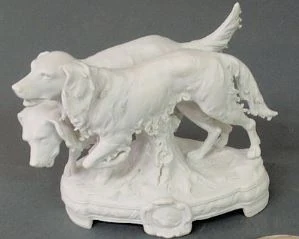 Parian ware is a type of unglazed porcelain that was first produced in the 1840s. It is named after the Greek island of Paros, which was famous for its white marble. Parian ware was developed as a substitute for marble, and it was used to create decorative objects that imitated the look and feel of marble. The popularity of Parian ware reached its peak in the late 19th century, and it remains a sought-after collectible today.
Parian ware is a type of unglazed porcelain that was first produced in the 1840s. It is named after the Greek island of Paros, which was famous for its white marble. Parian ware was developed as a substitute for marble, and it was used to create decorative objects that imitated the look and feel of marble. The popularity of Parian ware reached its peak in the late 19th century, and it remains a sought-after collectible today.
History of Parian Ware
Parian ware was first produced by the Staffordshire pottery firm of Copeland & Garrett in the early 1840s. The company's head designer, John Rogers, was inspired by the white marble sculptures of the ancient Greeks, and he set out to create a porcelain that could mimic the look and feel of marble. The result was Parian ware, a type of unglazed porcelain that was hard, durable, and translucent.
Parian ware was an immediate success, and other pottery firms quickly followed Copeland & Garrett's lead. By the 1860s, Parian ware was being produced by dozens of potteries in England, Scotland, and Ireland, as well as in France, Germany, and the United States.
Parian ware was used to create a wide range of decorative objects, including busts, figurines, vases, and plaques. The most popular subjects were classical and mythological figures, but Parian ware was also used to create realistic portraits of famous people, such as Queen Victoria and Napoleon Bonaparte.
Parian ware remained popular until the early 20th century, when it was largely supplanted by more colorful and decorative ceramics. However, it has experienced a resurgence in popularity in recent years, and it is now highly sought after by collectors.
Characteristics of Parian Ware
Parian ware is characterized by its unglazed, matte finish, which gives it a smooth, marble-like texture. It is made from a mixture of kaolin, feldspar, and bone ash, and it is fired at a high temperature to create a hard, durable material.
Parian ware is often decorated with molded or applied ornamentation, such as flowers, leaves, and other decorative motifs. It may also be painted or gilded, although these techniques were less common than mold decoration.
Parian ware is usually white or off-white in color, although it may be tinted with a light shade of blue or pink to imitate the veining found in marble.
Collecting Parian Ware
Parian ware is highly collectible, and it is prized by collectors for its historical significance, artistic merit, and rarity. Collectors may focus on a particular type of object, such as busts or figurines, or they may collect Parian ware from a particular pottery or period.
When collecting Parian ware, it is important to look for pieces that are in good condition, with no cracks, chips, or repairs. It is also important to verify the authenticity of the piece, as there are many reproductions and fakes on the market.
One of the most important factors in determining the value of a piece of Parian ware is its rarity. Rare objects, such as those produced by a particular pottery for a limited time or those depicting an unusual subject, can command high prices at auction.
Other factors that can affect the value of Parian ware include the quality of the molding and decoration, the skill of the artist, and the historical significance of the piece. Pieces that are signed by the artist or marked with the name of the pottery may also be more valuable than those that are unmarked.
It is also important to consider the condition of the piece, as any damage or restoration work can greatly affect its value. Pieces that are in their original, unaltered condition are typically more valuable than those that have been repaired or restored.
When purchasing Parian ware, it is important to buy from a reputable dealer or auction house. It is also advisable to do some research on the piece and the potteries that produced it, to ensure that you are getting an authentic and valuable piece.
Caring for Parian Ware
Parian ware is a durable material, but it should still be handled with care to prevent damage. When cleaning Parian ware, it is best to use a soft, dry cloth to gently wipe away any dust or dirt. If necessary, a damp cloth can be used, but care should be taken to avoid getting water on any delicate moldings or decorations.
It is also important to avoid exposing Parian ware to extreme temperatures or rapid temperature changes, as this can cause cracking or damage to the piece. It is best to store Parian ware in a dry, cool place, away from direct sunlight or heat sources.
Conclusion
Parian ware is a unique and beautiful type of porcelain that has a rich history and continues to be a sought-after collectible today. Its smooth, marble-like texture and elegant designs make it a timeless addition to any collection, and its rarity and historical significance only add to its value.
Whether you are a seasoned collector or just starting out, Parian ware is a wonderful addition to any collection, and with its durability and timeless beauty, it is sure to be treasured for generations to come.
Unlock the true value of your collection with our comprehensive research guides from identifying makers' marks to appraising all kinds of antiques and collectibles, including items featured in this article.
Our up-to-date information will give you an accurate understanding of your items' worth. Don't miss out on this valuable resource - visit our research tools today!
In addition to some examples shown below on this page, you can also search our price guide for your own treasures.
Examples of related items from our Price Guides
-
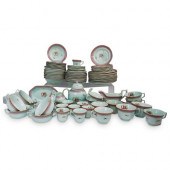 (92 PC) ENGLISH IRONSTONE ADAMS CALIX WA
[more like this]
(92 PC) ENGLISH IRONSTONE ADAMS CALIX WA
[more like this]
-
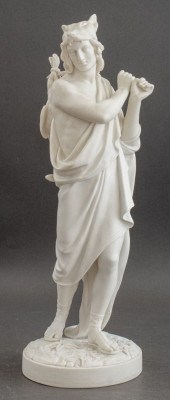 PARIAN WARE FIGURE OF A CLASSICAL HUNTER
[more like this]
PARIAN WARE FIGURE OF A CLASSICAL HUNTER
[more like this]
-
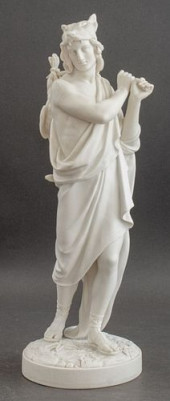 PARIAN WARE FIGURE OF A CLASSICAL HUNTER
[more like this]
PARIAN WARE FIGURE OF A CLASSICAL HUNTER
[more like this]
-
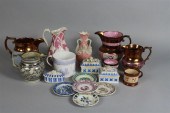 ELEVEN LUSTRE AND PARIAN PIECES mid to l
[more like this]
ELEVEN LUSTRE AND PARIAN PIECES mid to l
[more like this]
-
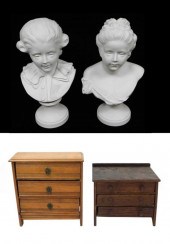 FOUR PIECES OF DECORATIVE ARTS INCLUDING
[more like this]
FOUR PIECES OF DECORATIVE ARTS INCLUDING
[more like this]
-
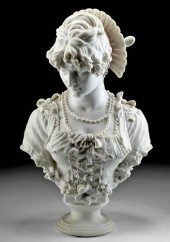 19TH C. ITALIAN PARIAN PORCELAIN BUST OF
[more like this]
19TH C. ITALIAN PARIAN PORCELAIN BUST OF
[more like this]
-
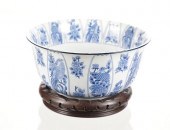 BLUE & WHITE PEACOCKS ARITA WARE BOWL &
[more like this]
BLUE & WHITE PEACOCKS ARITA WARE BOWL &
[more like this]
-
 THREE FIGURAL PARIAN WARE SCULPTURES19th
[more like this]
THREE FIGURAL PARIAN WARE SCULPTURES19th
[more like this]
-
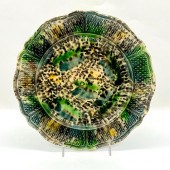 TORTOISESHELL WARE OR WHIELDON WARE ENGL
[more like this]
TORTOISESHELL WARE OR WHIELDON WARE ENGL
[more like this]
-
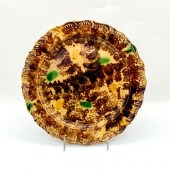 TORTOISESHELL WARE OR WHIELDON WARE ENGL
[more like this]
TORTOISESHELL WARE OR WHIELDON WARE ENGL
[more like this]
-
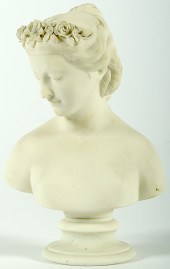 Parian Ware Figural Bust Continental a p
[more like this]
Parian Ware Figural Bust Continental a p
[more like this]
-
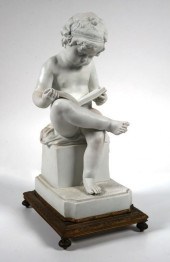 PARIAN WARE FIGURE OF BOY READING BOOKBi
[more like this]
PARIAN WARE FIGURE OF BOY READING BOOKBi
[more like this]
There are many more auction results available to our members...





